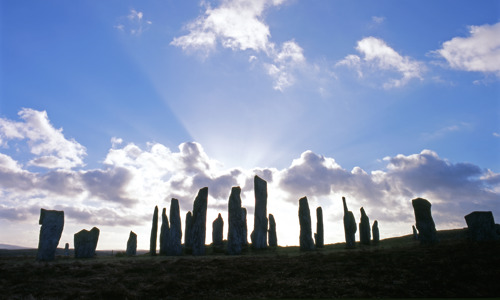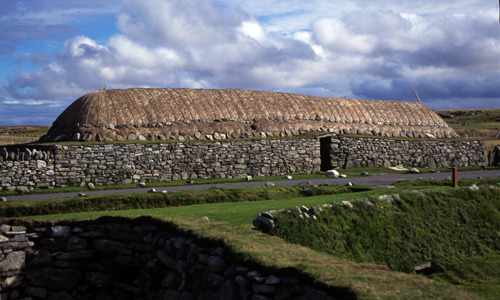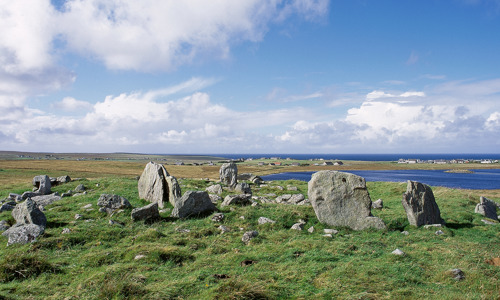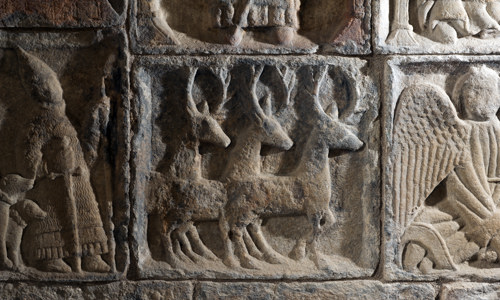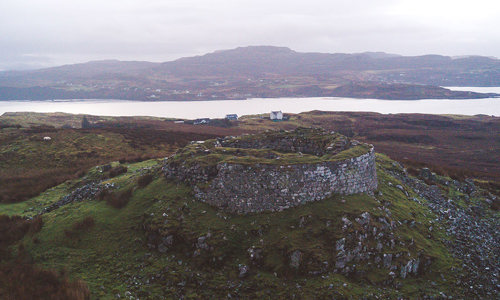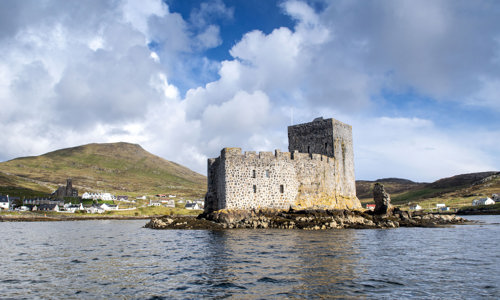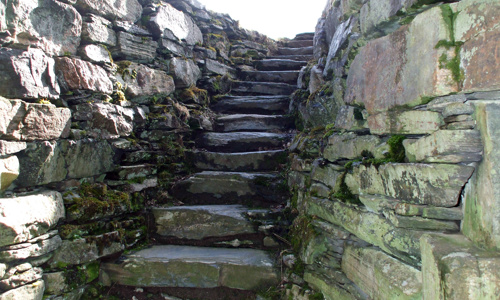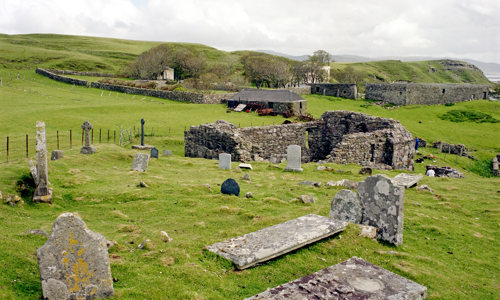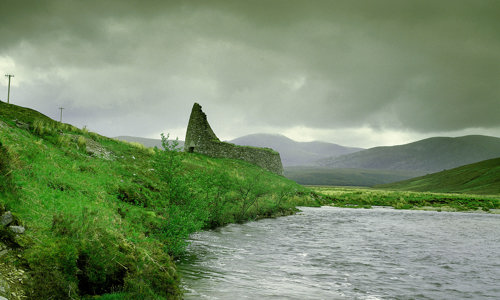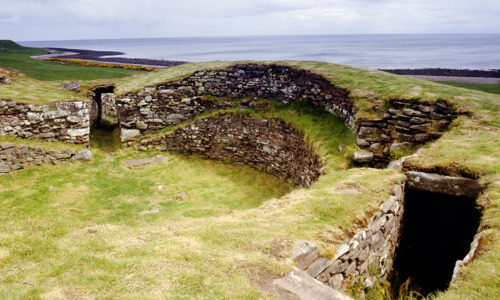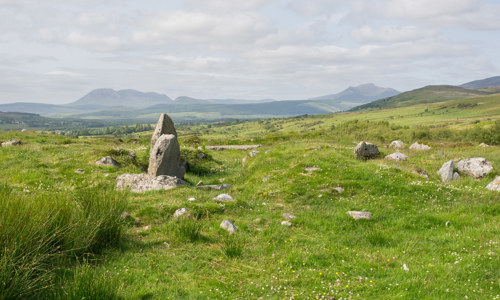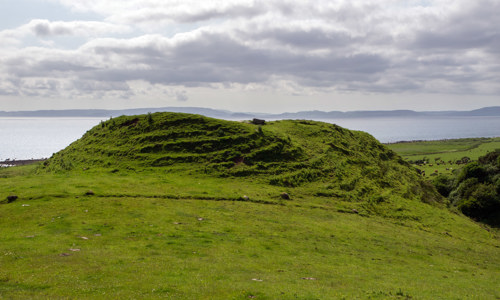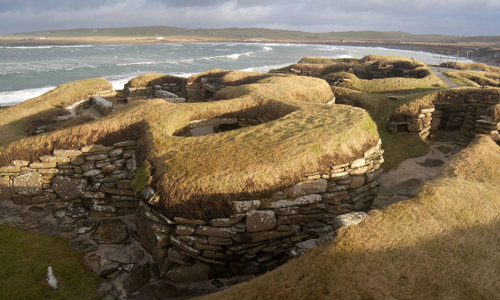History
A stronghold, a family home, and a kiln
Dun Carloway was probably built in around 200 BC and may have been occupied by a local chief, as a symbol of status and control over the local landscape and resources. Excavations and traditions show that the broch continued in use, intermittently, over a long period of time. Over the centuries it has also been used as:
- a pottery kiln
- a shelter for the Morrisons of Ness during a cattle raid on the MacAulays in the 1500s (according to tradition)
- a home for “a respectable looking family living in the ground flat” as late as the 1870s
Stunning spot
Dun Carloway is a striking monument in the landscape. This impressive example of Iron Age architecture may have been designed to make a bold statement of status, wealth or power. It was also easily defended, sitting high on a rocky outcrop, with wide views for miles around.
The broch tower is in an excellent state of repair. It’s the best-preserved Iron Age building in Lewis, and at 9m tall, one of only a handful of broch towers surviving to near its original height.
The collapsed area of wall reveals a perfect cross-section of the broch. Its main features include:
- a double-skinned wall with two tiers of internal galleries
- a ground-level low entrance passage into the broch
- a small cell, possibly a guard-room, off the passage
- a stairway that originally led to the upper floor(s)
- a stone ledge, or scarcement, on the inside face of the wall which probably supported the upper floor
Uniquely Scottish
Brochs appear only in Scotland. They consist of drystone towers formed of two concentric walls, with a narrow passage and small cells. A stone stair corkscrews between the inner and outer walls to the top.
There are well over 500 brochs in Scotland, most of them found in northern and western Scotland and the islands.


